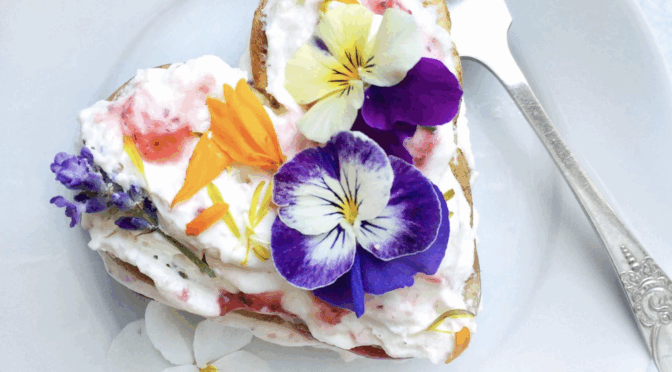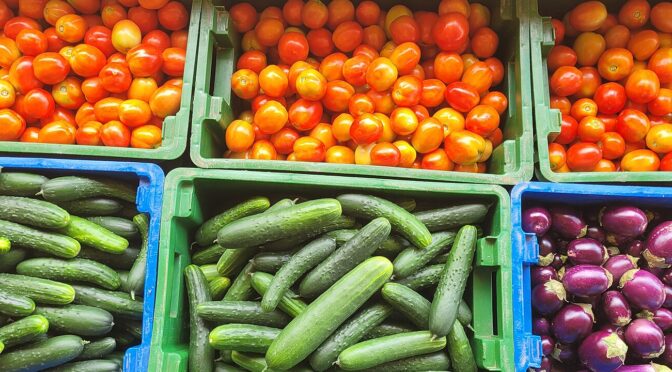Cut flowers can be a lucrative product for young farmers, existing produce farms looking to expand their operations, greenhouses extending their offerings after spring planting, or gardeners looking for a side hustle. However, there’s a lot that goes into productive flower farming before you get to pick those bouquets. Here are some steps you should take if you want to get started with cut flowers.
Finding a Market for Your Cut Flowers
Before you order those seeds, it’s important to ensure you have a market for your flowers. These days, there are many methods to consider. You can offer flowers wholesale to a local florist or other vendor, sell bouquets at local markets, offer a bouquet subscription similar to a CSA, or even offer cut-your-own bouquets.
No matter what option you choose, it’s important to realize that you’ll need to spend time advertising, working with people, and ensuring the flowers you do offer are all high quality. While farming seems idyllic and relaxing, there’s a lot that goes on behind the scenes.
Building Soil for Cut Flowers
The first step is to get a soil test. They’re easy to do and cheap, and they eliminate all the guesswork that comes with amending soil. Quality is key when growing cut flowers for market, and that starts with nutrient-rich soil. In addition to a soil test and any necessary amendments, it’s also a good idea to add finished compost or aged manure to each bed. It adds nutrients and organic matter to improve soil texture and drainage.
When building beds for cut flowers, especially in the southeast, you’ll probably want to opt for raised or mounded beds unless you have light, sandy soil. Most flower varieties require good drainage, which can be tough in the clay soils prevalent throughout much of the Southeast. Build beds so that you can easily reach across them to weed and harvest, generally no wider than 4 feet across. A pathway around the outside of each bed is also critical for access.
Best Beginner Cut Flowers
There are many options for cut flowers, and you might be tempted to start ordering seeds, bulbs, and perennial plants right away. However, we suggest getting started with some tried and true, easy to grow options as part of your main offerings. Here are four of our beginner favorites.
Zinnias
Zinnias are the workhorses of any flower garden. They offer a vast range of colors, various shapes, fast growth, and continuous flowering. Zinnias are also pretty easy to grow. You don’t need to worry too much about your soil; zinnias aren’t fussy.
However, zinnias can fall victim to fungal diseases. To keep them producing well, it’s important to clip spent blooms and foliage, space them properly, and harvest regularly. While zinnias will flower all season long, they can slow down or produce blooms with reduced quality after a time, especially if they get a disease. Thankfully, zinnias are excellent candidates for succession planting.
Sunflowers
Sunfowers are a beginner favorite because they germinate and produce quickly. Their large, bright blooms are a great focal point for fresh bouquets, and they offer several shapes and colors.
We divide sunflowers into two categories: single-stem sunflowers and branching sunflowers. Single-stem sunflowers are easy to grow and highly reliable. They produce stunning blooms on large, thick stems. While branching sunflowers have the benefit of producing multiple blooms and extending the harvest, their stems may not be as sturdy and straight as single-stem varieties. 
Rudbeckia
Many people think of the classic Black-Eyed Susan, but there are other types of Rudbeckia too, like Prairie Sun with its gold petals and unique green centers. While not as easy to grow as sunflowers or zinnias, rudbeckia still made the beginner list because once you get it going, it’s highly productive. A single plant can offer tons of blooms and you’ll find different varieties that bloom from early summer to late fall.
Cosmos
Cosmos are another easy to grow colorful flower that’s great for beginners. The downside is that their stems aren’t quite as sturdy as zinnias, but they add a whimsical touch to bouquets and are great for succession planting. For early blooms, try our Sensation Mix, which is ready to harvest in just 45 days.
Other great options
- Basil
- Amaranth
- Daffodils
- Snapdragons
- Delphiniums
- Stock
- Asters
- Tulips
- Strawflowers
- Statice
- Dara
- Celosia
- Oregano
- Bells of Ireland
Spacing and Support
Spacing varies with species, but proper spacing is key to good production. Spacing too widely can decrease your yield and may affect your plants’ growth. Some cut flowers grow nice, straight, long stems when spaced close together. However, spacing too tightly can stunt plant growth or contribute to fungal disease issues because of poor airflow.
To produce quality stems and blooms, most cut flower varieties also need some form of trellis or support. For some flowers like sunflowers or sweet peas, this may mean a tall, upright trellis like you would use for pole beans or even just tall stakes.
However, for shorter flowers, we also like to provide support to encourage straight stems and reduce lodging. For flowers like cosmos, you can suspend mesh or fencing parallel above the ground when the flowers are small so that they grow up through it. 
Irrigating and Fertilizing Cut Flowers
Rainfall isn’t usually adequate for good flower production; cut flowers need consistent moisture to produce well. Most growers will find it easiest to invest in a drip irrigation system to save on labor and water. For most flowers, 2 lines per bed is ideal. The drip lines should emit water next to the plant’s crown but not right on top of it.
When considering fertilizer, consult your soil test and each varsities specific needs. While all flowers perform better with nutrient-rich soil, some, like sunflowers, are heavy feeders and may benefit from additional feeding. For many cut flowers, a slow-release fertilizer in spring will be adequate.
Succession Planting
To ensure you have good production all season long, succession planting is key. You can stagger your harvest by planting varieties with different days to maturity, like Short Stuff Dwarf Sunflowers, which bloom in 54 days, and Autumn Beauty Sunflowers, which bloom in 70 days.
You can also sow multiple successions of the same variety. For cut flower gardens, we like to sow 2 to 3 successions of crops like zinnias, cosmos, and sunflowers in spring and early summer. Start sowing successions about 2 weeks apart after the initial planting.












